2017 Research Festival: The Brain, Inflammation, Cancer, and More
Report from the 2017 NIH Research Festival
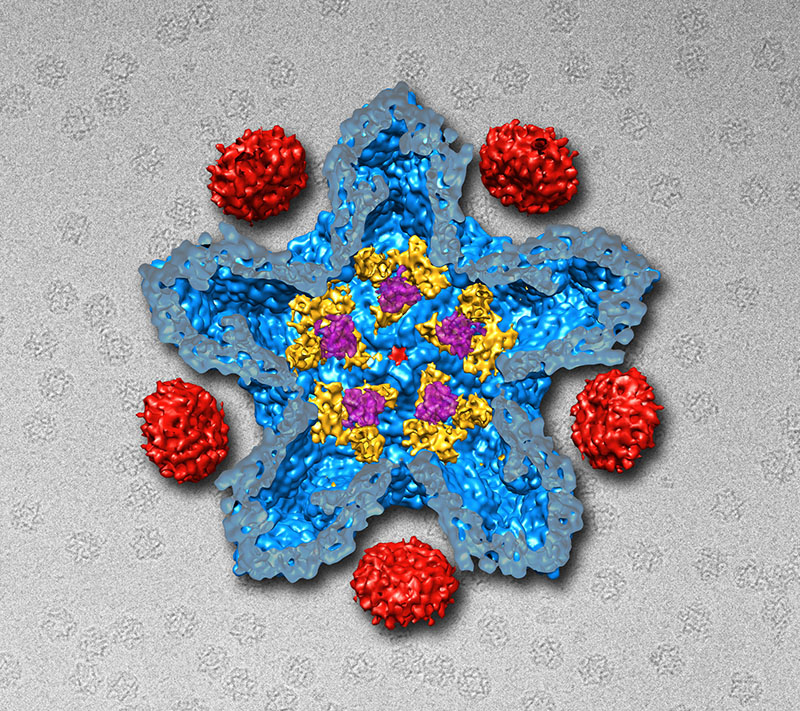
CREDIT: D. NEMECEK, J.B. HEYMANN, A.C. STEVEN, NIAMS
You guessed right: The bacteriophage Phi-6, which serves as a model system for rotavirus, the most common cause of diarrheal disease among infants and young children. An understanding of how the bacteriophage assembles may help scientists develop new ways of treating rotavirus infections. Shown here, a cryo-electron microscopy image of Phi-6‘s protein shell, or procapsid, cut open to show the different types of protein: P1 (blue), P4 (red), P7, yellow, and P2 (purple).
The annual Research Festival is “about the science we do here, but also about the people who do that science,” said Deputy Director for Intramural Research Michael Gottesman at the festival’s opening on September 13. The intent of the festival is for people from different institutes and centers (ICs) to meet each other and “to get new ideas, talk about their research, and hear about other people’s research so collaborations [can] start.”
The festival, which was held September 13 to 15 in the NIH Clinical Center, featured three plenary sessions: one on the BRAIN initiative, one on inflammatory diseases, and one on the Cancer Moonshot. Those as well as the concurrent symposia and poster sessions covered some of “the hottest topics at NIH,” said Gottesman. In addition, there were special exhibits on intramural resources; the Green Labs Fair; the FARE Awards ceremony; virtual-reality demos; the Technical Sales Association Exhibit Tent; a ceremony to recognize the contributions of research animals; and more.
This year’s event was co-chaired by scientific directors Susan Amara (National Institute of Mental Health) and Stephen Chanock (National Cancer Institute’s Division of Cancer Epidemiology and Genetics).
“It was natural for Susan and [me] to think about neurology and cancer as it was a natural reflection of what we do,” said Chanock. And “inflammatory diseases…was a best reflection of [research] that cuts across NIH.”
Other scientific directors got into the act and presented posters and delicious baked goods. NCI Scientific Director Tom Misteli took first place for his poster on “High-Throughput 3D Imaging of the Human Genome.” Two of the baked-goods submissions tied for first place: Darryl Zeldin’s (NIEHS) “Spice Cake with Buttercream Frosting” and Luigi Ferrucci’s (NIA) “Little Crostatas.”
Read articles on the plenary sessions and selected concurrent symposia. The plenary sessions were also videocast and are archived online.
PHOTO ROUNDUP
ALL PHOTOS BY MARLEEN VAN DEN NESTE
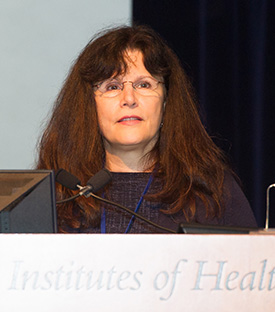
Festival co-chair Susan Amara introduced some of the scientific sessions.
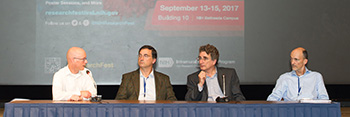
Scientists gave talks and took part in panel discussions.
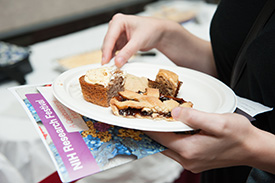
Festival goers sampled delicious treats prepared by scientific directors.
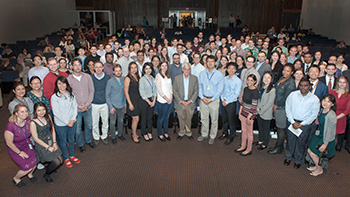
The winners of the 2017 FARE Award (Fellows Award for Research Excellence) gathered for a group photo with DDIR Michael Gottesman (front row, center) at the Research Festival. The FARE competition began in 1995 to recognize the outstanding scientific research performed by intramural postdoctoral fellows. FARE winners each receive a $1,000 travel award to facilitate the presentation of their exciting, novel research at a scientific meeting and they serve as judges for the following year’s competition. Their posters were also on display at the Research Festival.
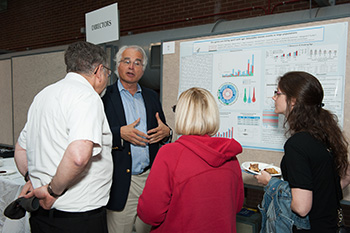
Festival co-chair Steve Chanock explained his research at the scientific directors poster session.
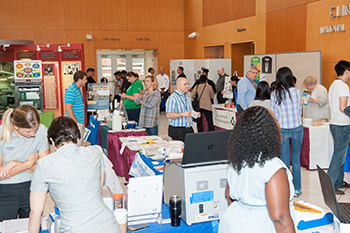
People were eager to see the “green” resources showcased at the Green Labs Fair. Exhibits featured energy-efficient freezers; digital photo processing that replaces the chemical-based photo processing; biodegradable and recyclable gloves and other items; more energy-efficient scientific equipment; recycling and waste-management information; and more.
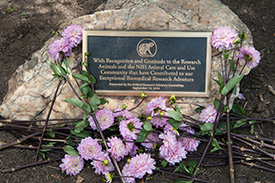
Flowers were placed on a commemorative plaque at the ceremony to honor research animals. One of the ceremony attendees said she “will be forever grateful to those research animals [that] helped pave the way to [her 18-month-old daughter’s] treatment and cure for pediatric neuroblastoma. Now, thanks to “the contributions of the animals,” her daughter is college age and “has a future [that] is bright and full of limitless possibilities.”
This page was last updated on Friday, April 8, 2022
